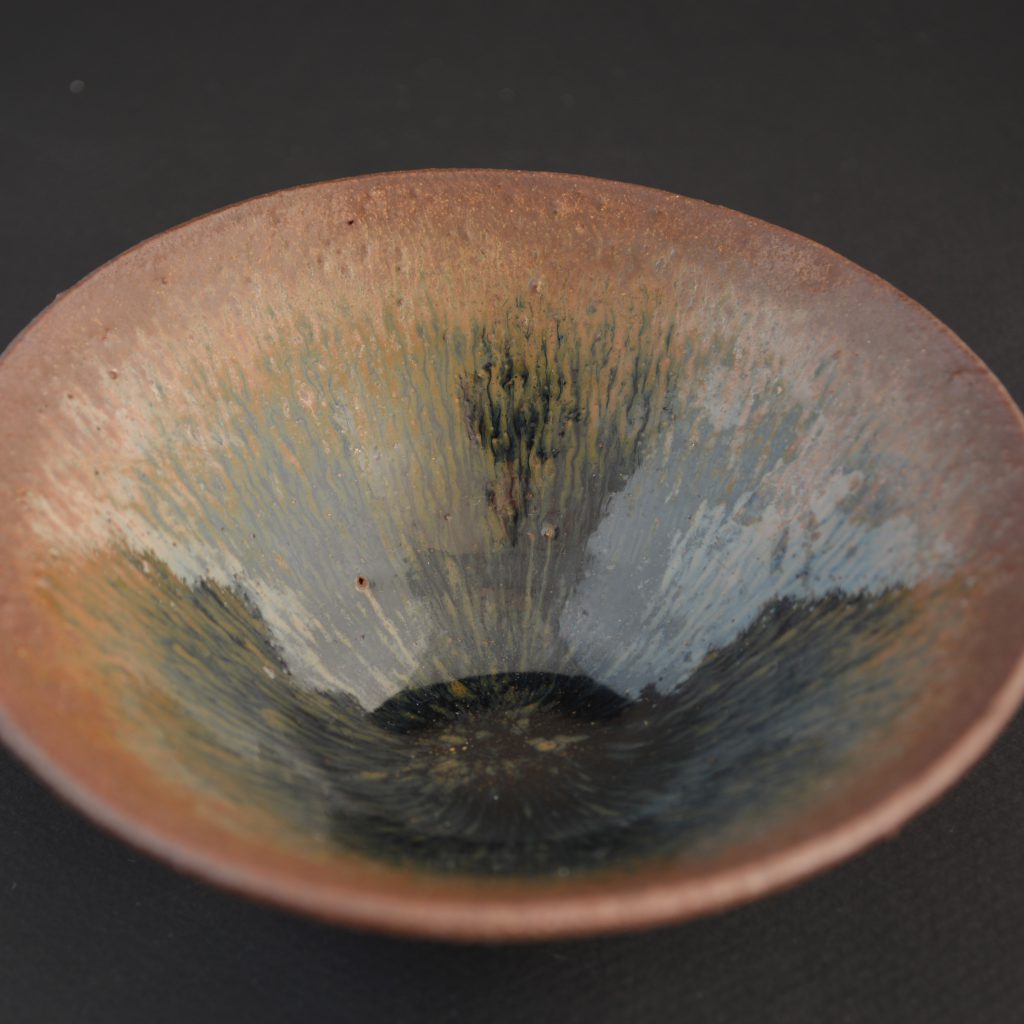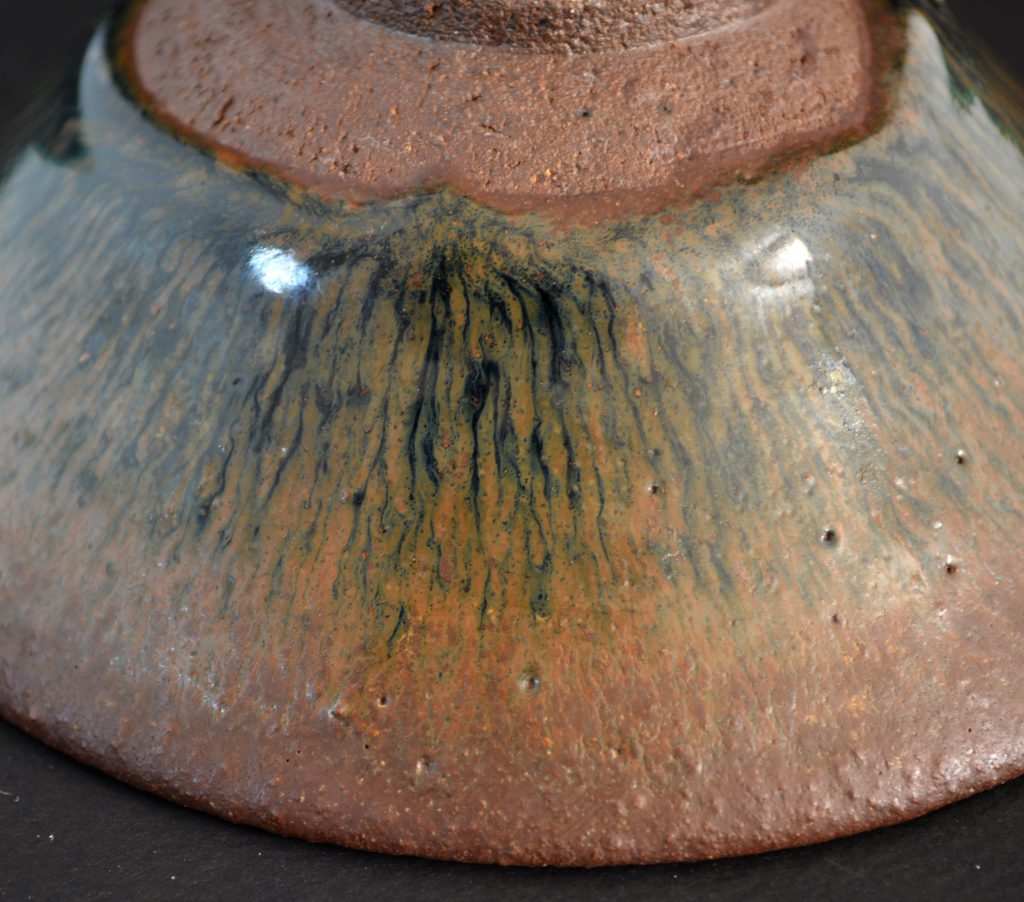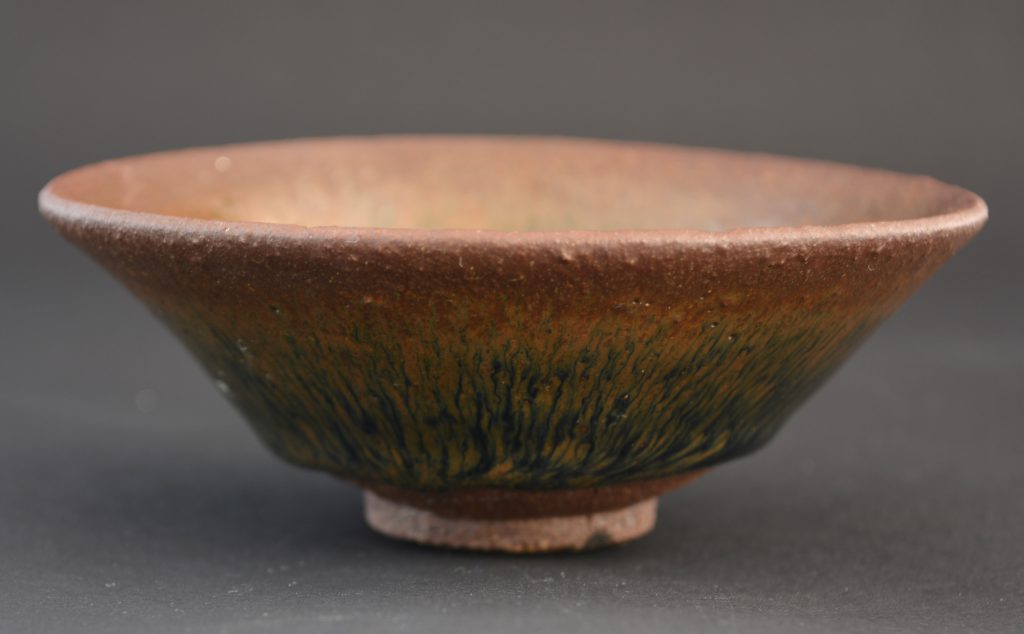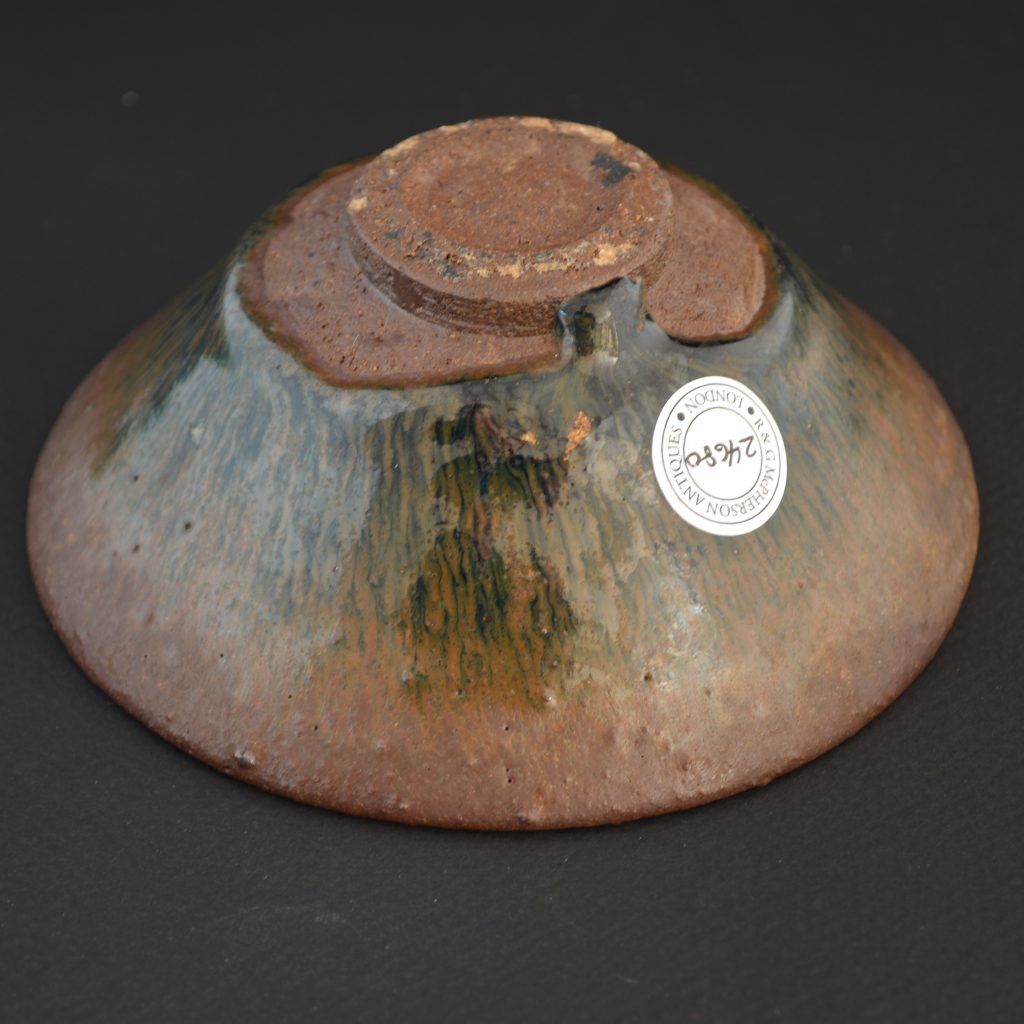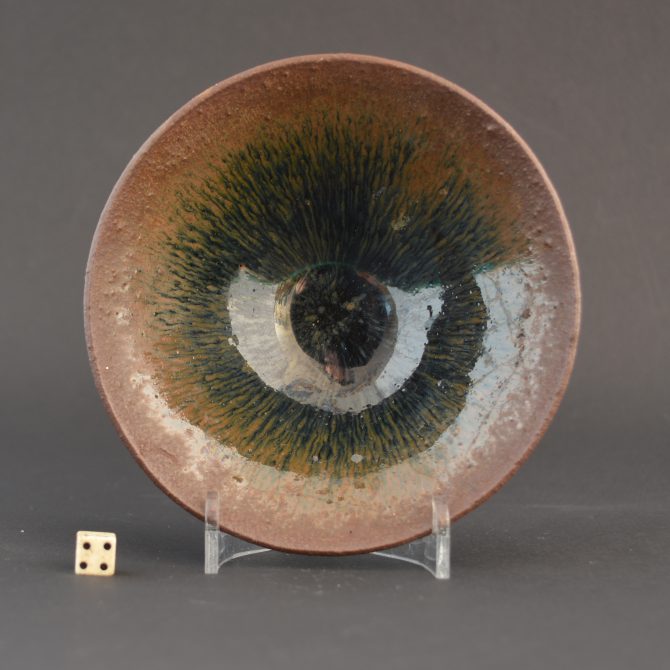
A Song Dynasty Jian Ware Teabowl with Hares Fur Markings 12th or 13th Century
Song Dynasty Jian Ware teabowl with `Hares Fur` marking, 12th – 13th century. Probably from Jianyang County, Fujian Province. This Jian Ware teabowl has typical `Hare`s Fur` markings radiating out from a rather dry rim.
SOLD
- Condition
- This bowl is in perfect condition. The brown edge is uneven and has a very rough surface.
- Size
- Diameter : 12 cm (4 3/4 inches)
- Provenance
- From a Private English Collection of Early Chinese Ceramics.
- Stock number
- 24680
Information
Jian Ware Teabowls :
Jian Stoneware teabowl bowls were double dipped, in other words it has been glazed twice. This for fills two main functions, the rich deep black colour is difficult to achieve with only one glaze application, it also means any small area missed by the first application are dealt with in the second. The first, thinner layer, is of a coffee colour, this can clearly seen on the back of the bowl. The thicker rich black second layer can be seen dribbling over the thinner paler coffee coloured glaze on the back. This first layer could be seen as an undercoat to add intensity to the second rich black glaze layer. The Jian kilns specialised in the production of teabowls with brown and black glazes. These teabowls are thickly constructed with stout shallow footrims, the other black ware to come from Southern China is Jizhou ware, which can be identified by their poorly formed footrims and the fact that the glaze doesn`t fit the body as well as Jian ware, it frequently crazes and can look `dry`. Southern black wares are constructed of a clay rich in iron oxides, this gives the stonewares a distinctive dark purple-black or blackish-brown appearance which contrasts with the Northern black wares that have less iron oxide in their body. The body colour of these Northern wares is paler, often a `putty` colour, grey or buff. For more about this type of stoneware see : Hare`s Fur, Tortoiseshell, and Partridge Feathers, Chinese Brown And Black Glazed Ceramics, 400-1400 (Robert D. Mowry, Harvard University Art Museum Cambridge, Massachusetts, 1996).
